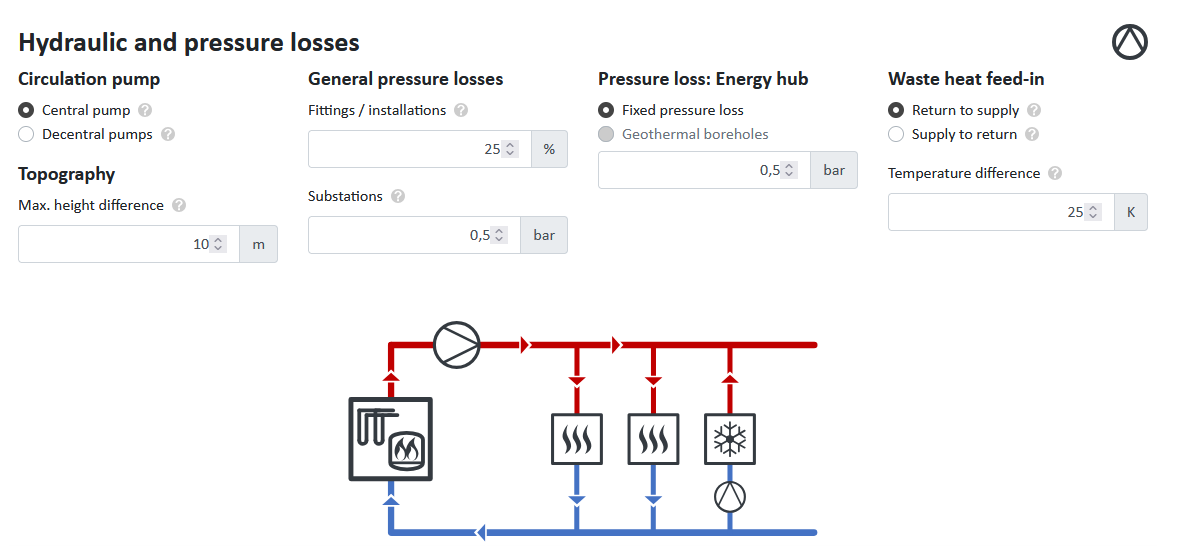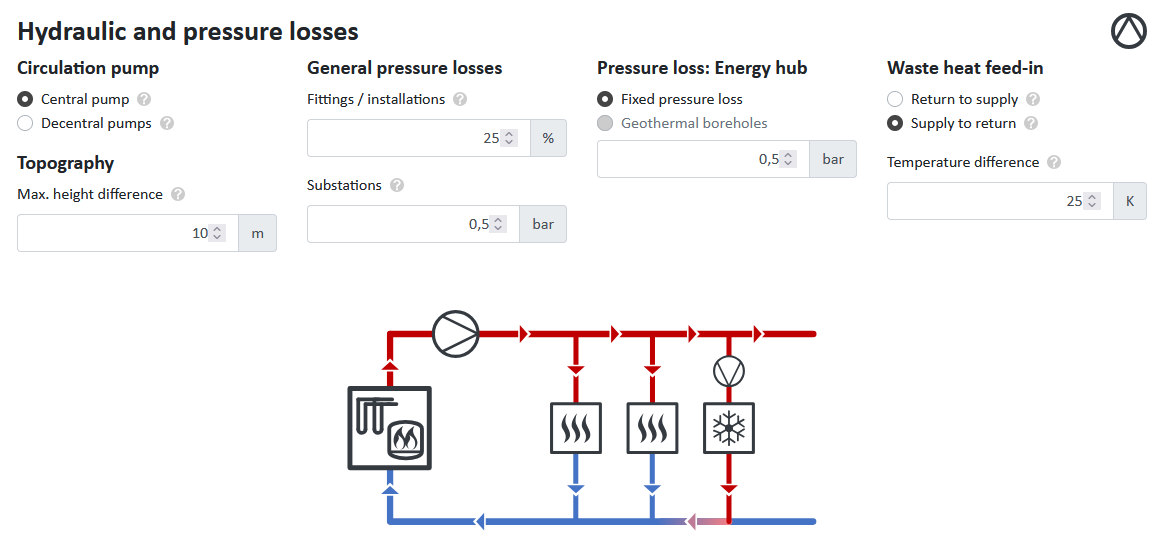Heat injection by prosumers in district heating networks
A prosumer refers to buildings that both consume and produce energy, feeding it into the system. This article explains how prosumer buildings can be considered in heating network calculations in nPro.
What are prosumers?
The term prosumer describes buildings that not only consume energy but also produce it. In the energy supply context, this includes both electricity and heat. In the electricity sector, the term typically refers to buildings with photovoltaic systems. These buildings can draw electricity from the grid during low solar radiation and feed excess electricity back into the grid when there is a surplus. In the heat sector, prosumers are buildings with both heating and cooling demands met through a heating network. When cooling demand exceeds heating demand, excess heat can be fed into the network. Typical examples include buildings with significant process cooling requirements, such as data centers or supermarkets, as well as buildings connected to a 5GDHC network that utilize passive cooling. This capability makes prosumers key players in flexible and efficient energy systems.
How can prosumers inject heat?
Generally, there are multiple ways prosumer buildings can inject heat into a heating network. Two main methods commonly used in practice are heat injection from the return to the supply pipe and heat injection from the supply to the return pipe.
From return to supply pipe

The heat transfer medium is drawn from the return line, heated via a heat exchanger within the prosumer, and then injected back into the supply line. This has the advantage of maintaining a constant return temperature. Additionally, the primary energy source can be gradually phased out as prosumers take over the heat supply in a decentralized manner. However, the prosumer pump must overcome the pressure difference between the supply and return lines. The closer the pump is to the energy center, the greater the required pressure differential. Furthermore, the injection temperature from the prosumer must be higher than the supply temperature, which may necessitate an additional booster heat pump. This method is particularly relevant in conventional heating networks to raise the supply temperature locally.
From supply to return pipe

In this method, the heat transfer medium is drawn from the supply line, heated via a heat exchanger within the prosumer, and then injected back into the return line. The main advantage is that there is no need to overcome a pressure differential, and the flow direction of the medium remains unchanged. However, prosumers cannot replace the primary heat source (energy center) with this approach. Therefore, this method is particularly suitable for 5GDHC networks, where regenerating the heat source is desired.
Sources
This might also interest you
nPro software
Plan your energy system with nPro!

 English
English
 Deutsch
Deutsch


